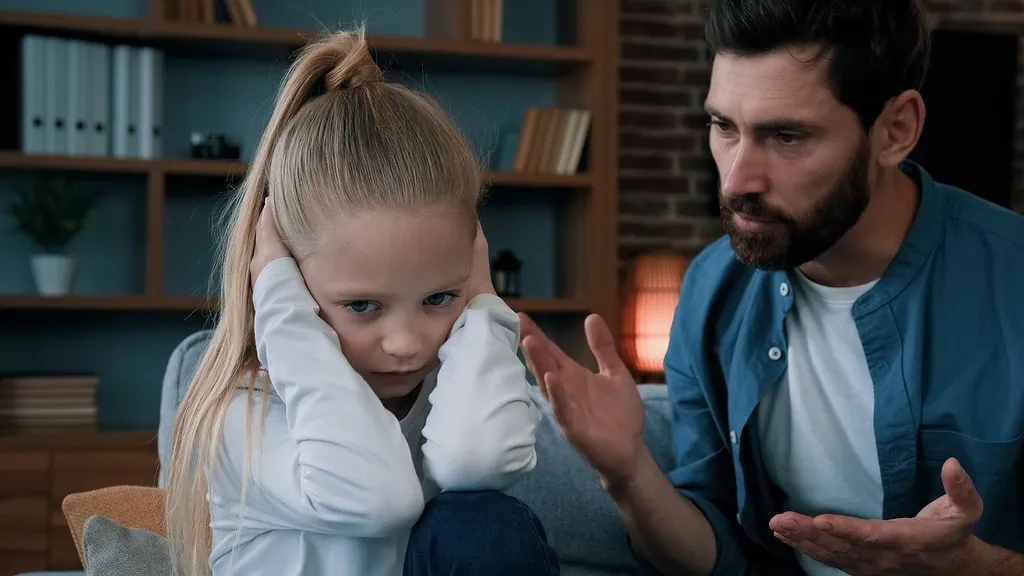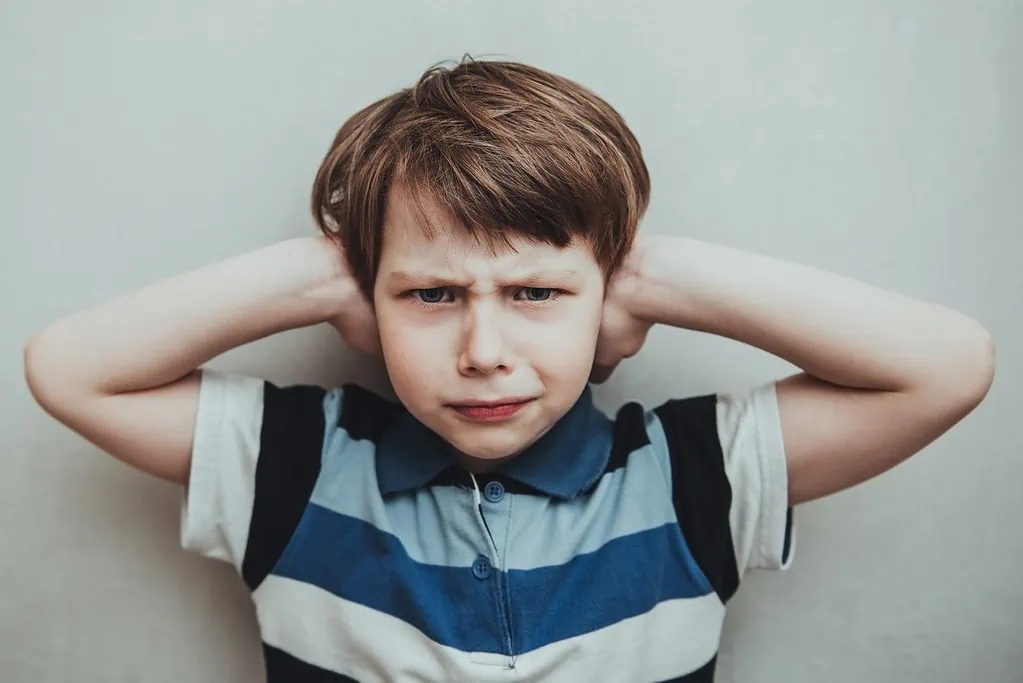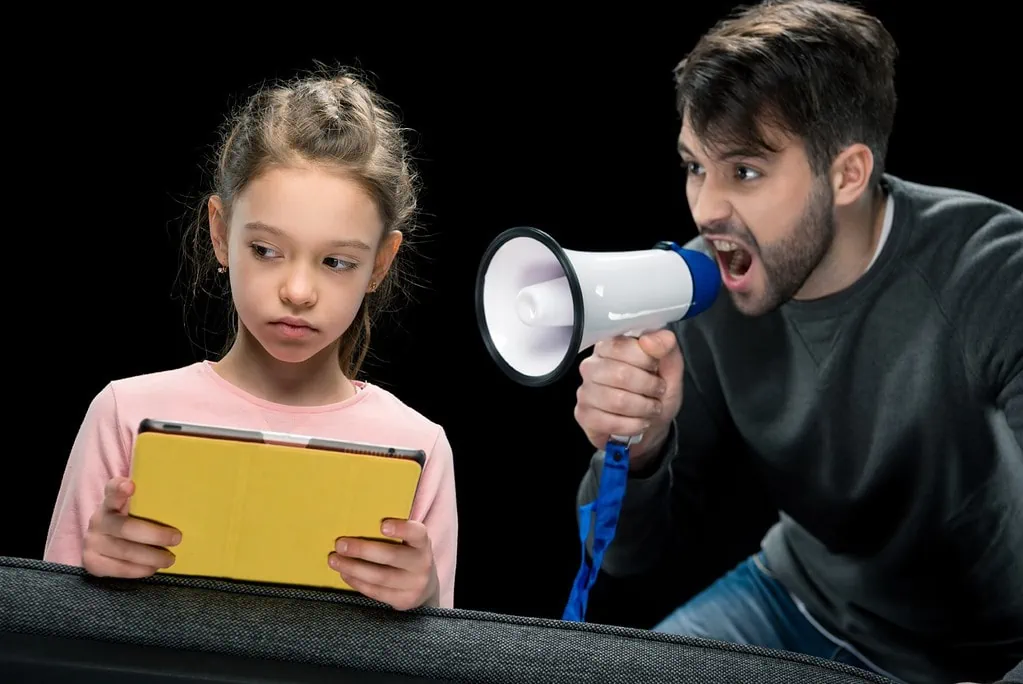Yelling at your children can lead to significant negative effects, such as lowered self-esteem, increased behavioral issues, and strained parent-child relationships. Let’s examine how we might alter our behavior for a healthier family dynamic and push deeper into understanding these effects.
Decreased self-esteem
Yelling at your kids can significantly dent their self-esteem. Studies show a strong correlation between harsh discipline and decreased self-confidence among children. It’s like throwing rocks into the quiet waters of your child’s psyche; over time, it causes emotional pain by jarring their perception of their value.
Soon, these ripple effects may disrupt their overall mental wellness, leading to other psychological harm such as anxiety or depression. Being on the receiving end of verbal aggression also negatively influences a child’s self-image, making them feel less capable or unworthy.
Just think about how their parents’ anger hinders their potential growth and encourages more unfavorable emotions, which no parent wants for their children. Kids need to feel loved and respected to develop healthy relationships with themselves and others in life.

Increased behavior problems
One negative consequence of raising your voice is dealing with increased levels of behavioral issues in youngsters. Yelling can spark episodes of aggression and bullying, instilling a negative mode of interaction with others.
In such an environment, kids may replicate this aggressive conduct as they perceive it as customary. Moreover, chronic exposure to verbal abuse can heighten their susceptibility to anxiety and depression disorders.
These emotional disturbances often act as fuel for additional behavioral issues down the line. Worryingly, research suggests that these psychological effects are similar to those caused by physical punishments such as spanking.
Children’s trust in parental authority dwindles as a result of regular berating, leading them astray into increasingly troublesome behavior patterns. Finally, prolonged screaming jeopardizes the child’s general psychological well-being; such discomfort eventually presents itself through escalating trouble behaviors at home or school.
Damaged parent-child relationship
Yelling at kids is more than just a loud voice. It’s the shattering of trust, undermining self-esteem, and a clear sign of an ineffective communication system between you and your child.
I know it can be challenging to keep cool, especially when patience runs thin. Yet, constant shouting shakes the foundations of a healthy parent-child relationship. The emotional trauma inflicted on children through chronic yelling sneaks into their minds like unwelcome intruders, generating emotions of insecurity that may loom large in their lives in the long run.
These difficulties are more than just hiccups in our parenting path; they offer significant risks to our children’s resilience, which is something we all strive for as parents. Instead, let’s try to manage our anger better and make conscious efforts not to resort to such harsh discipline methods because they do nothing but harm our bond with our cherished ones.

10 Strategies to Stop Yelling at Your Kids
Learn practical techniques to stop yelling at your children; first, recognize your personal triggers, then consider using mild warnings rather than raising your voice. Remember the power of taking short breaks when you feel overwhelmed, and cultivate a “Yes” list where positive behaviors are rewarded.
Be patient and choose a more appropriate time to convey lessons or discipline, understanding that certain behaviors are part of being a child. Consider taking proactive efforts before problems begin, such as reevaluating your expectations for their behavior based on their age and developmental stage.
Develop emotional intelligence by recognizing your own emotions before they escalate into shouting; strive for open communication with mutual respect as the foundation.
Identify your triggers
Identifying your triggers is the first step to stop yelling at your kids. Triggers are certain situations or behaviors that instantly make you angry, leading to an outburst. They can be as simple as a messy room or constant whining by your child.
Unraveling what these triggers are will allow for proactive measures. Before reaching the point of yelling, I can use different modes of communication to effectively reduce clashes with my child and improve the quality of our connection.
Give warnings to your child
Warnings are crucial in promoting healthy communication between you and your child. It’s an effective form of behavior management that allows the child to foresee the consequences of their actions if they continue down a certain path.
This encourages self-control, and decision-making skills and helps build respect for boundaries and limits. Putting this method into action entails developing explicit boundaries on behavioral expectations that are known by both parties involved.
When used correctly, warnings can greatly decrease unneeded yelling while also teaching your child essential life skills.
Take a break
Feeling overwhelmed by parenting responsibilities isn’t unusual. Taking a break is an essential strategy to prevent shouting at your kids. Press the pause button on your frustrations before they spiral out of control, resulting in yelling.
Engage in relaxation techniques, such as deep breathing exercises or chewing gum, to reduce stress and maintain calmness.
As parents, we must prioritize our own well-being. Avoid handling challenging situations with your children when you’re exhausted or running low on patience; it only fuels the fire of frustration.

Make “Yellibacy” a personal commitment by resolving not to raise your voice when things get hot at home. This strategy promotes effective communication within the family unit while improving emotional self-regulation.
Create a “Yes” list
Building a “Yes” list is one step I took to improve my communication with my kids. Rather than saying no all the time, this method focuses on what your children can do. It’s about respecting their needs and promoting positive parenting by actively listening and empathizing with their perspectives.
Does your child want more control? Add activities they can choose independently to your list. Do they wish for extra sweet treats after dinner? List healthy desserts that meet your approval.
Proceeding in this way reduces conflicts and instills emotional intelligence in youngsters as it prioritizes understanding over direct orders or refusal.
This proactive strategy also assists me in keeping track of my own emotions, effectively eliminating unwanted ranting episodes. With practice, you’ll find it easier to set healthier boundaries without resorting to anger. The “Yes” list strategy has its roots in nonviolent communication and conflict resolution strategies, which are essential for fostering a healthy parent-child relationship.
So why not give it a shot today? Start constructing your very own ‘Yes’ list and notice how this simple yet effective tool transforms parental interactions!
Teach the lesson later
Taking a timeout to calm down before addressing your child’s behavior is crucial. It allows you to regain authority effectively and respectably, leading to better emotional regulation for both you and your child.
This strategy holds significant value in managing reactions without yelling and ensuring constructive communication without unnecessary conflict. Yelling immediately only escalates the situation, whereas teaching the lesson later helps promote understanding between you and your child, offering a more meaningful dialogue about their actions.
As parents, we need to focus on alternative discipline methods that promote respectful conversations with our children rather than resorting to an immediate reaction of anger or frustration.
Understand normal child behavior
Understanding normal behavior is essential in changing our reactions to children’s actions. Kids usually learn through trial and error, so it’s only natural for them to be curious, impulsive, or even defiant.
Reacting harshly could discourage their intuitive learning process and may lead to negative behavioral patterns later on. Instead of yelling when they make mistakes, we should maintain a peaceful environment that encourages growth and exploration.
For instance, a toddler throwing food during mealtime might seem like misbehavior, but it’s actually part of their developmental phase where they experiment with gravity and cause-effect relationships. Same thing as counting to 10, these milestones are pretty important in their growth.

So next time you feel the urge to yell, take a deep breath and remember this is just typical child behavior; handle it calmly yet assertively with appropriate discipline measures instead.
Be proactive
Being proactive is all about acting in anticipation of future problems or changes. Let us try as parents to change our reactive tendencies into proactive techniques that will help us manage conflict with our children more effectively.
To begin, we might take the time to understand the triggers that cause us to yell and devise strategies for quietly crossing those emotional minefields. This gives us an upper hand in situations where tempers usually flare up.
Proactive parenting also encompasses modeling appropriate behavior for our kids – showing them how we would want them to act when conflicts arise. It involves understanding their normal behavior patterns and adjusting our expectations accordingly.
Above all, being proactive signifies a conscious effort towards practicing calm responses over impulsive reactions, often resulting in yelling. This approach not only strengthens the parent-child relationship but also instills a sense of respect and trust in the family.
Adjust your expectations
Being a parent is not about perfection, nor should we expect it from our kids. Kids are unique beings, full of quirks and strengths. It’s essential to understand that every child will make their fair share of mistakes – this is a normal part of growing up and learning! Instead of expecting flawlessness, let’s shift our focus toward teaching and guiding them through these missteps.
Embrace your child’s individuality and learn to meet them where they’re at in development stages. This understanding allows you to set appropriate behavior expectations grounded in reality rather than fantasy.
Patience and understanding play crucial roles here as we navigate the rough terrains alongside our children while being realistic in parenting expectations – remember, Rome wasn’t built in a day! So keep cultivating this positive approach toward parenthood: adjusting your expectations by accepting imperfections can help build stronger bonds with your child.
Recognize your own emotions
Understanding your own emotions is an important method for dealing with yelling outbursts. It’s common to feel overwhelmed with stress, anger, or frustration as a parent. This emotional awareness helps you understand your feelings and reactions better.

Acknowledging these emotions doesn’t mean you are losing control; it shows that you’re human, and this self-realization can help secure the emotional safety of children. Try engaging in mindfulness techniques or calming activities like reading a book, listening to music, meditation, or even physical activity for stress relief when feelings start to spike. You can even create a fun activity with your children, such as gymnastics at home or playing video games together – it works wonders!
Also, consider seeking support from friends – there’s no shame in admitting our struggles and asking for help sometimes! Remember your ultimate duty: providing physical safety for your child while maintaining their emotional well-being.
Have open communication
A successful parent-child connection is built on open communication with your child. It’s about freely exchanging thoughts, ideas, feelings, and concerns. This strategy is essential in reducing conflicts at home and promoting understanding between you and your child.
Through open communication, you’re teaching your kid to express their emotions assertively instead of acting out with behavior problems. A consistent dialogue shows that their ideas are respected, which promotes self-esteem and emotional intelligence.
Particularly during conflicts or challenging moments, this approach proves beneficial as it encourages problem-solving through calm discussions rather than resorting to yelling or heated arguments.
